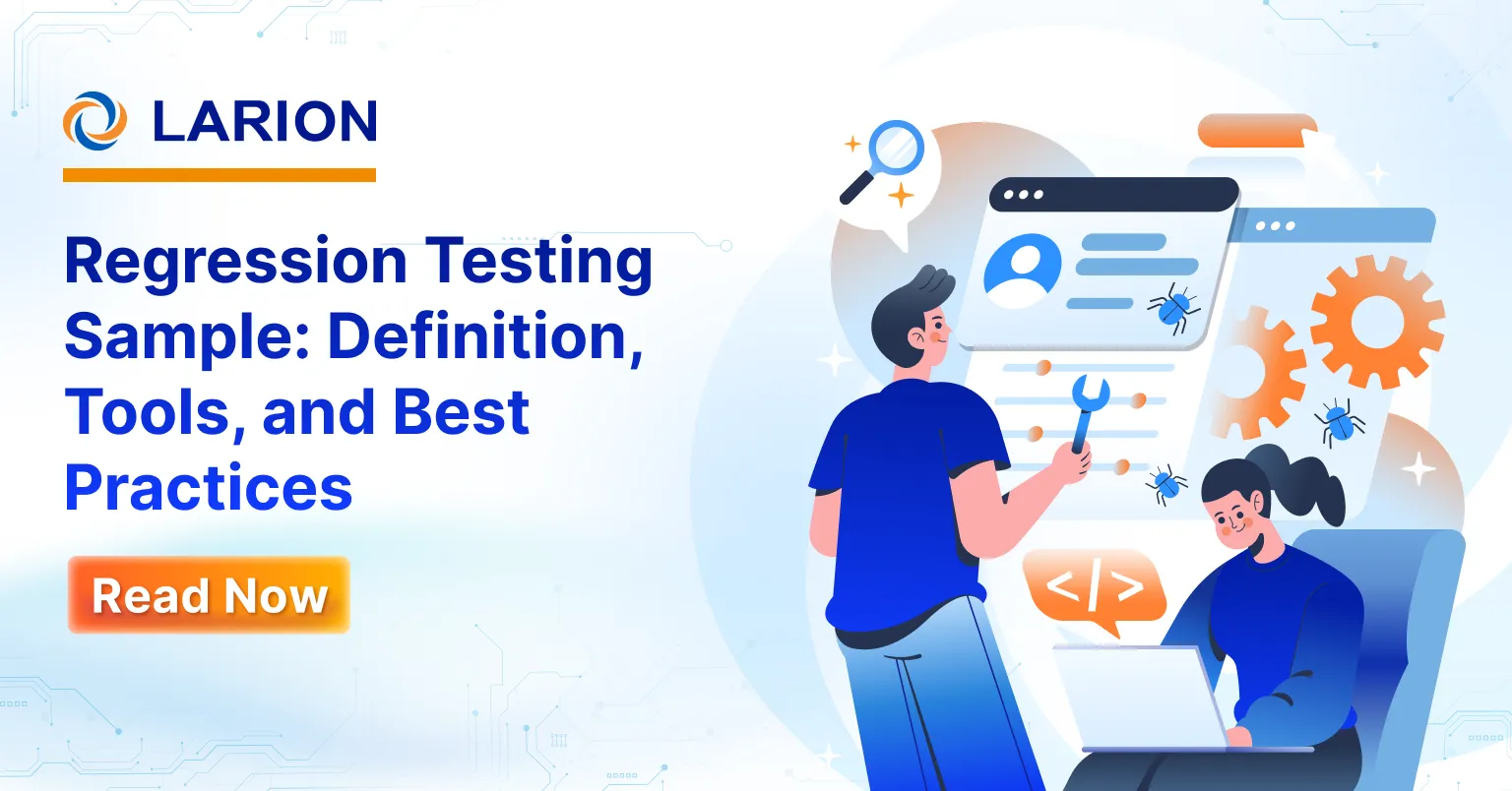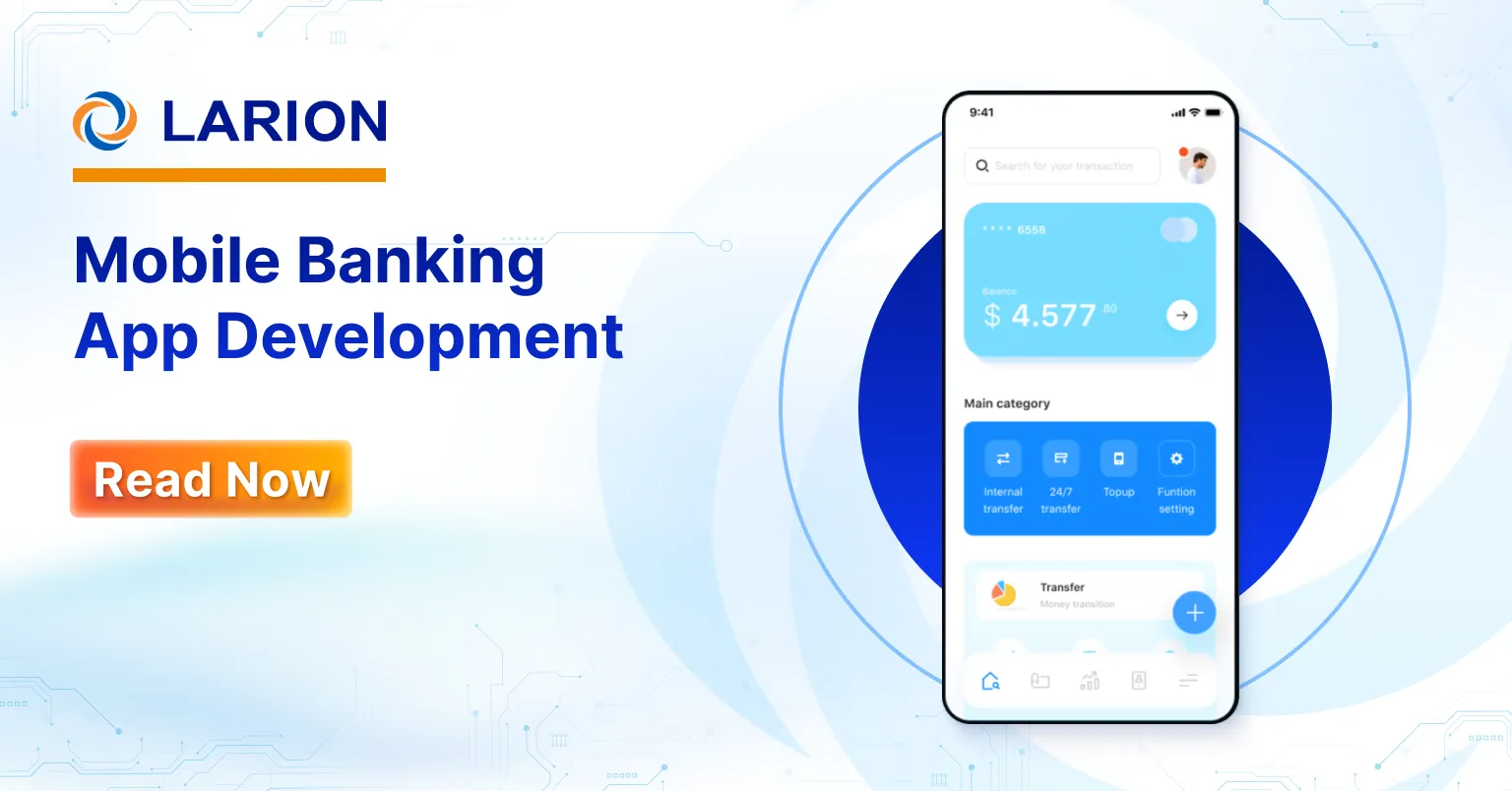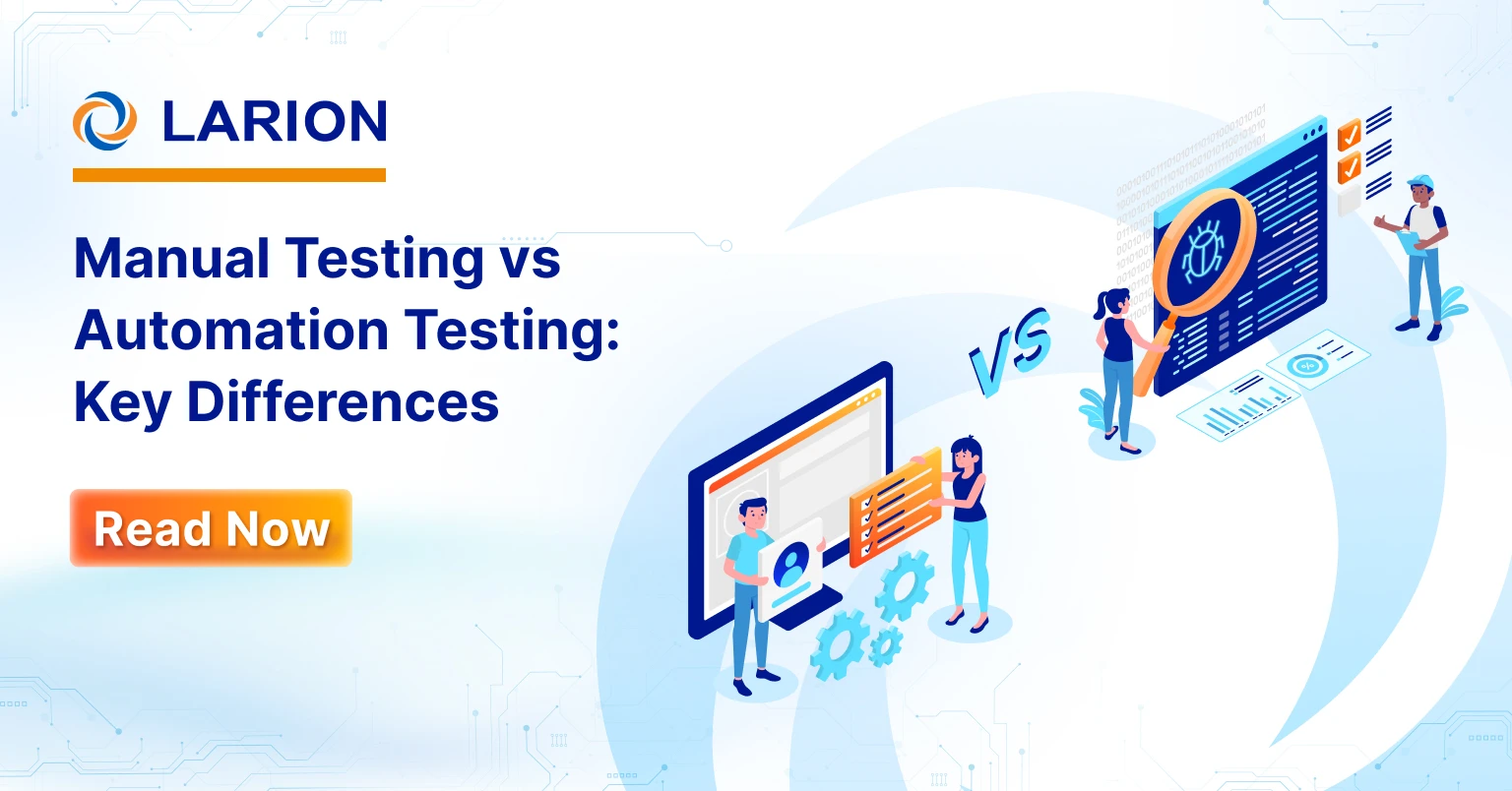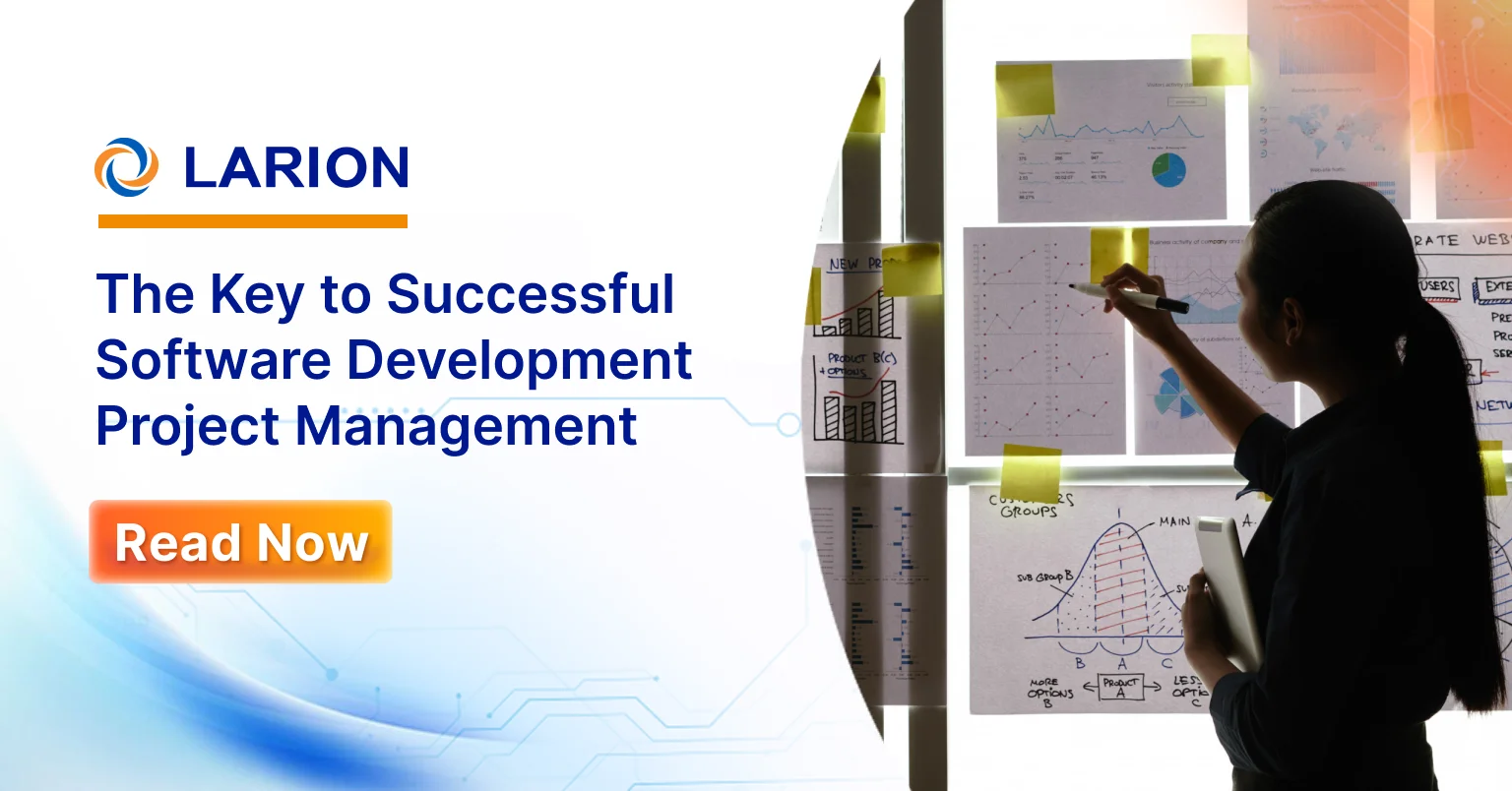
Did you know that 75% of software projects fail? According to PR Newswire, poor management, unrealistic goals, weak communication, and budget constraints are the main culprits.
But what if you could turn the odds in your favor? With effective software development project management, you can keep teams aligned, meet deadlines, and deliver high-quality solutions. Imagine leading projects that stay on track, within budget, and foster seamless collaboration—turning challenges into success stories
In this blog, we’ll explore key principles, methodologies, and tools to help you manage projects efficiently. Let’s dive in!
What is software project management?
Software development project management (SDPM) is the process of planning, executing, and overseeing software development projects to ensure they are completed on time, within budget, and meet quality standards. As a crucial part of software development, SDPM involves organizing resources, teams, and tasks to adapt effectively to evolving requirements while ensuring effective communication among stakeholders.
Key benefits of effective project management in software development include:
- Clear goals: Establishes a well-defined roadmap, ensuring team efforts align with business objectives.
- Efficient resource allocation: Optimizes time, budget, and workforce to maximize productivity.
- Risk management: Identifies potential issues early to minimize delays and prevent project failures.
- Improved collaboration: Enhances communication among stakeholders, reducing misunderstandings and ensuring alignment.
- Faster time-to-market : Streamlines processes to accelerate software deployment.
- Cost control: Monitors budgets closely to prevent scope creep and unnecessary expenses.
Project manager vs. Product manager: key differences
Product managers and project managers play distinct but complementary roles in development projects. Here’s how they differ:
| Aspect | Project Manager | Product Manager |
| Focus |
Execution, timeline, and delivery |
Product strategy, vision, and roadmap |
| Key Responsibility | Ensures the project is completed on time and within budget |
Defines what should be built and why |
| Interaction with Teams | Coordinates development teams, stakeholders, and resources to complete the project |
Works with marketing, sales, design, and engineering to define the product |
| Example Deliverables | Project plan, timeline, risk management, stakeholder updates |
Product roadmap, feature prioritization, customer insights |
In summary, the product manager defines what should be built based on market needs while the project manager ensures how it gets built efficiently within time and budget constraints.
The 7-step software development project management process

Effectively managing software development projects demand a well-structured and strategic approach to guarantee successful delivery while staying within scope, budget, and timeline constraints. The project cycle management is typically divided into several essential phases, each contributing significantly to optimizing efficiency and maintaining quality. Below is a step-by-step breakdown of the software project management process.
Stage 1: Planning
The first step in software development project management is collecting and analyzing business requirements. Stakeholders and project managers identify essential needs by addressing key questions such as:
- Who will use the software?
- How will it be used?
- What data will be input and output?
Once these questions are answered, a structured outline is created for developers. The gathered data is validated, and a requirement specification document is prepared, serving as a reference for the next phase.
Key activities:
- Conduct stakeholder interviews and requirement workshops
- Document functional and non-functional requirements
- Define project scope and objectives
- Create the requirement specification document
Stage 2: Analysis
In this phase, teams refine high-level plans into a technical roadmap by assessing architectures, programming languages, and development approaches. The outcome is a clear implementation strategy, ensuring teams are ready for development.
Key activities:
- Assess different architectural approaches
- Select technology stack and development methodologies
- Define high-level system components and dependencies
- Develop an implementation roadmap
Stage 3: Feasibility & Risk Assessment
Before moving forward, teams evaluate potential risks and feasibility concerns that may impact the project’s success. This phase ensures that all technical, financial, and operational risks are identified and mitigated early.
By addressing these factors early, teams can adjust plans to mitigate risks before development begins
Key activities:
- Conduct risk assessments and mitigation planning
- Analyze project feasibility in terms of cost, time, and resources
- Estimate project budget and return on investment (ROI)
- Validate project viability through proof-of-concept (PoC) if necessary
Stage 4: Design
This phase focuses on creating a detailed technical blueprint for the system, including architecture, UI, and database design. Stakeholder approval is required before moving to development.
Key activities:
- Develop system architecture diagrams
- Create UI mockups
- Design database schema
- Define technical specifications
Stage 5: Implementation
This phase involves coding, testing, and integrating software components. The development team collaborates with designers to ensure requirements are met while maintaining quality and performance standards.
Key activities:
- Write code
- Conduct unit testing
- Integrate modules
- Perform system testing
Stage 6: Testing & Integration
This phase ensures software quality and performance through various testing methods. QA teams use automation tools to detect and report bugs, which are fixed before deployment.
Key activities:
- Develop test plans and test cases
- Conduct unit, integration, and system testing
- Perform user acceptance testing (UAT)
Stage 7: Maintenance
The maintenance phase ensures the application remains stable and efficient after deployment. Teams continuously monitor performance, fix issues, and gather feedback for future updates, making the software development project management an ongoing, iterative process.
Key activities:
- Identify and fix post-deployment issues
- Monitor system performance
- Collect feedback for future improvements
- Plan and implement updates
Maintenance continues indefinitely until the application is retired or replaced by a newer version.
Example of IBM’s software development project management
In addition to following common methodologies, companies can also tailor their project management approach to best fit their needs. For instance, IBM refined its software development project management methodology into the 7 Keys to Success framework, which includes:
- Stakeholder commitment: Ensure active engagement and support from all stakeholders, including visible executive sponsorship and dedicated resources.
- Realizing business benefits: Clearly articulate and measure the project’s value to the organization, ensuring alignment with business objectives.
- Predictable work and schedule: Maintain clear milestones and transparency to keep projects on track.
- Realistic & managed scope: Define and control the project’s scope to prevent scope creep and ensure all stakeholders understand project boundaries.
- High-performing team: Assemble a skilled and motivated team that collaborates effectively to achieve project goals.
- Mitigated risks: Identify, assess, and proactively manage potential risks to minimize their impact on the project.
- Delivery organization benefits: Ensure the project enhances the organization’s reputation, contributes to professional development, and adds to organizational knowledge.
To assess project health, IBM’s framework uses a traffic light system:
- Green: Everything is on track.
- Yellow: Potential issues need attention.
- Red: Serious risks require immediate action.
By monitoring these factors with the traffic light system, teams can quickly identify problems, make informed decisions, and keep projects on course.
Top popular AI-powered project cycle management tools
Integrating AI for project management has revolutionized the way teams plan, execute, and monitor projects. Many tools now incorporate AI features to enhance efficiency and decision-making. Below is an overview of popular project management tools and their AI capabilities:
Jira
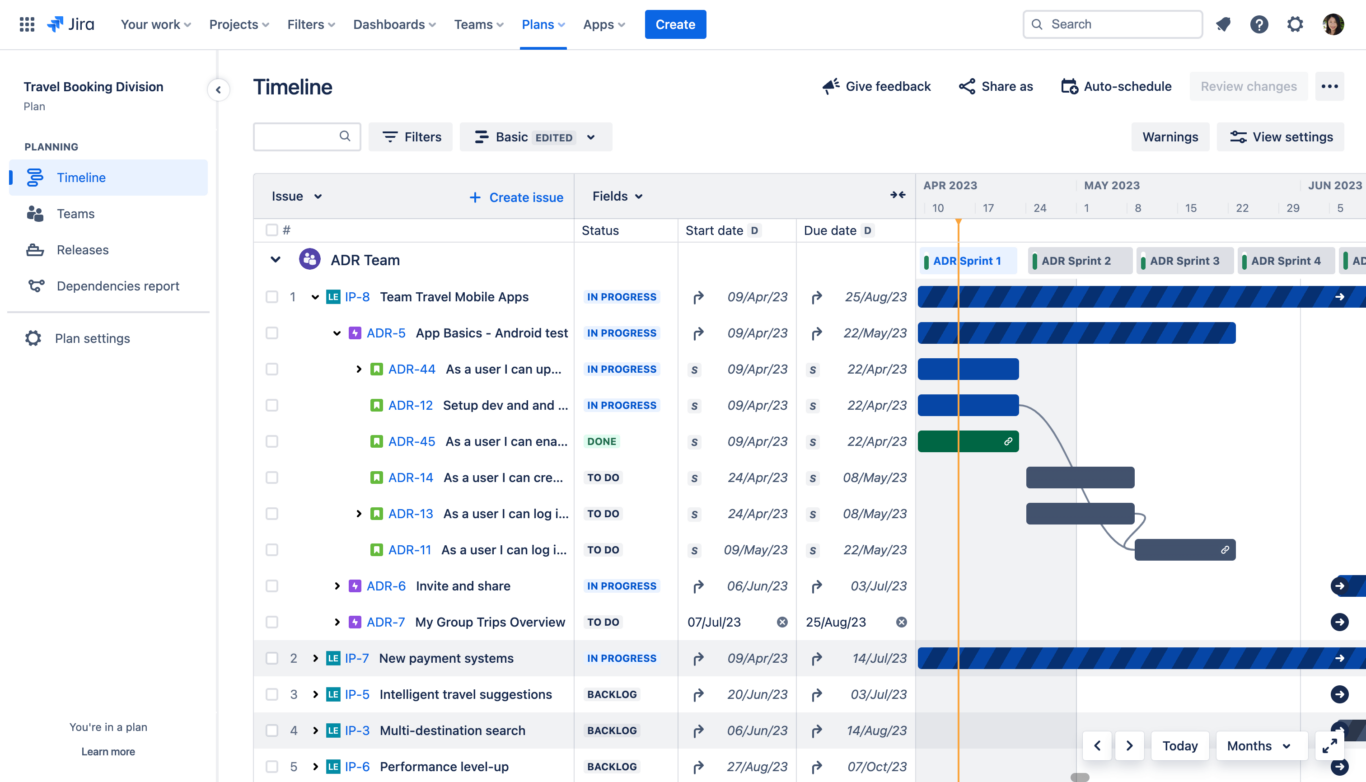
Jira is a widely used project management tool that streamlines task planning, tracking, and issue management for software teams. Its intuitive interface, drag-and-drop functionality, and clear task descriptions enhance usability. With extensive customization options, teams can tailor workflows to their needs.
AI features:
- Quickly summarizes issue details and comment histories
- Assists in drafting and refining content within Jira issues
- Allows users to find issues using conversational language
Trello
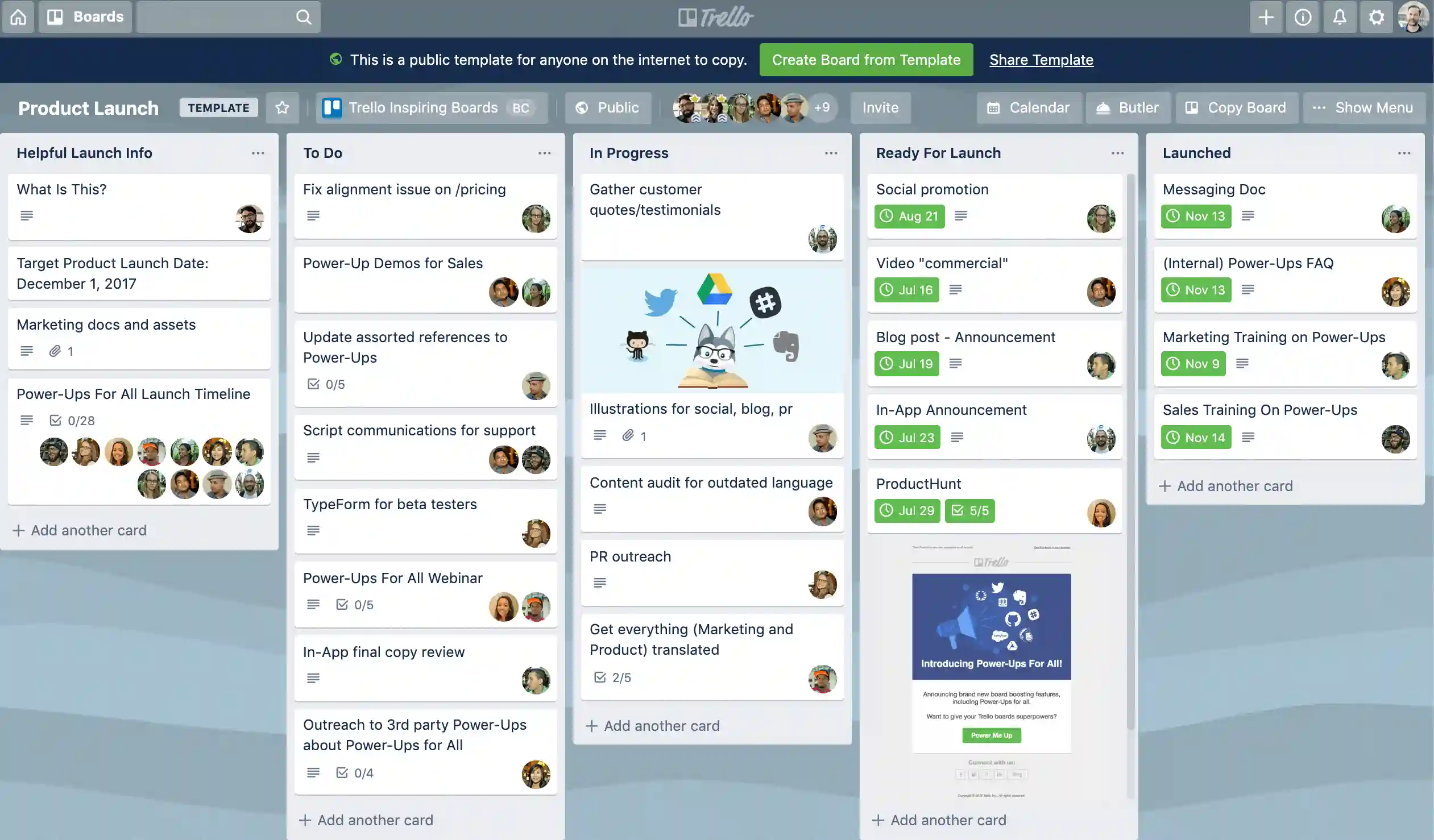
Trello is a flexible, cloud-based project management tool that uses a Kanban-style board system for organizing tasks visually. Its drag-and-drop interface makes it easy to manage workflows, track progress, and collaborate in real time. Trello is ideal for teams of all sizes, supporting various project management methodologies like Agile and Scrum.
AI Features:
- Identify and organize action items from notes, enabling users to create checklists and plans efficiently
- Offers a visual prioritization framework, helping teams align tasks with strategic objectives.
Asana
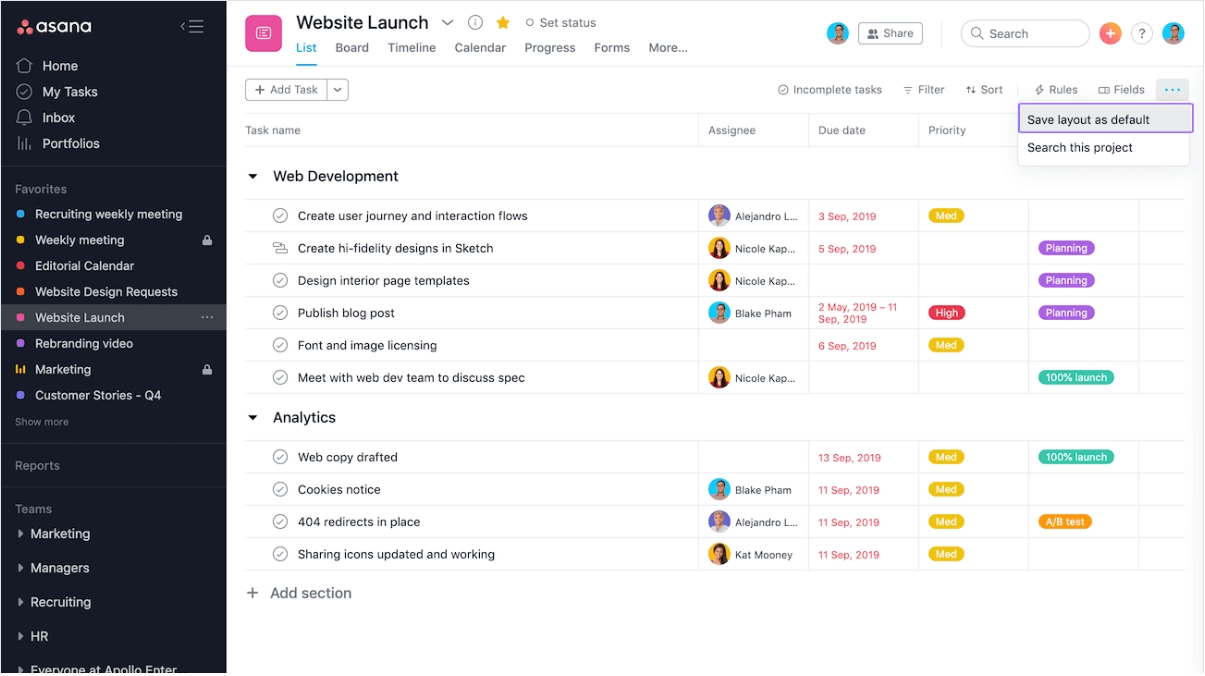
Asana is a powerful AI-driven project management tool designed for teams of all sizes. Its intuitive interface, versatile features, and powerful integrations support various workflows, including Agile and Scrum.
The latest feature of Asana Machine Learning allows the platform to analyze metadata from user interaction, projects and tasks to enhance workflow efficiency. It prioritizes inbox content, suggests next steps, and provides shortcuts based on user activity. Additionally, Asana’s AI-powered features include Smart Status for detecting roadblocks and Smart Goals for setting achievable objectives, continuously expanding its intelligent capabilities
AI Features:
- Analyze metadata from user interaction, projects and tasks
- Detect roadblocks, suggest next steps, and provide shortcuts based on user activity
Taskade
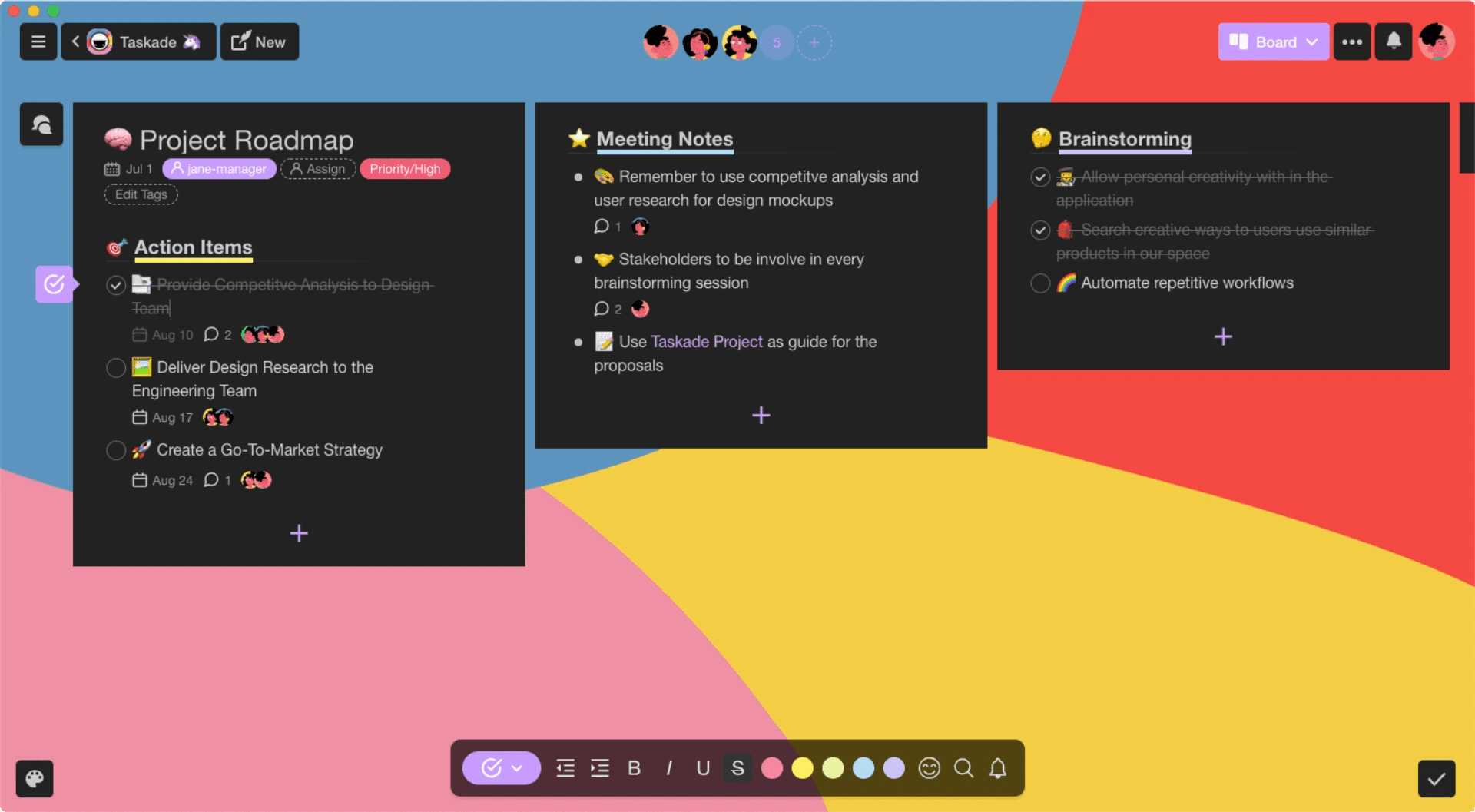
Taskade is an AI for project management tool that enhances team collaboration and workflow efficiency. It supports Agile and Scrum methodologies, making task management and project planning seamless.
AI features:
- Automates routine tasks, offers intelligent scheduling suggestions, and provides real-time insights into project progress
- Task allocation, risk analysis, and workflow optimization
ClickUp
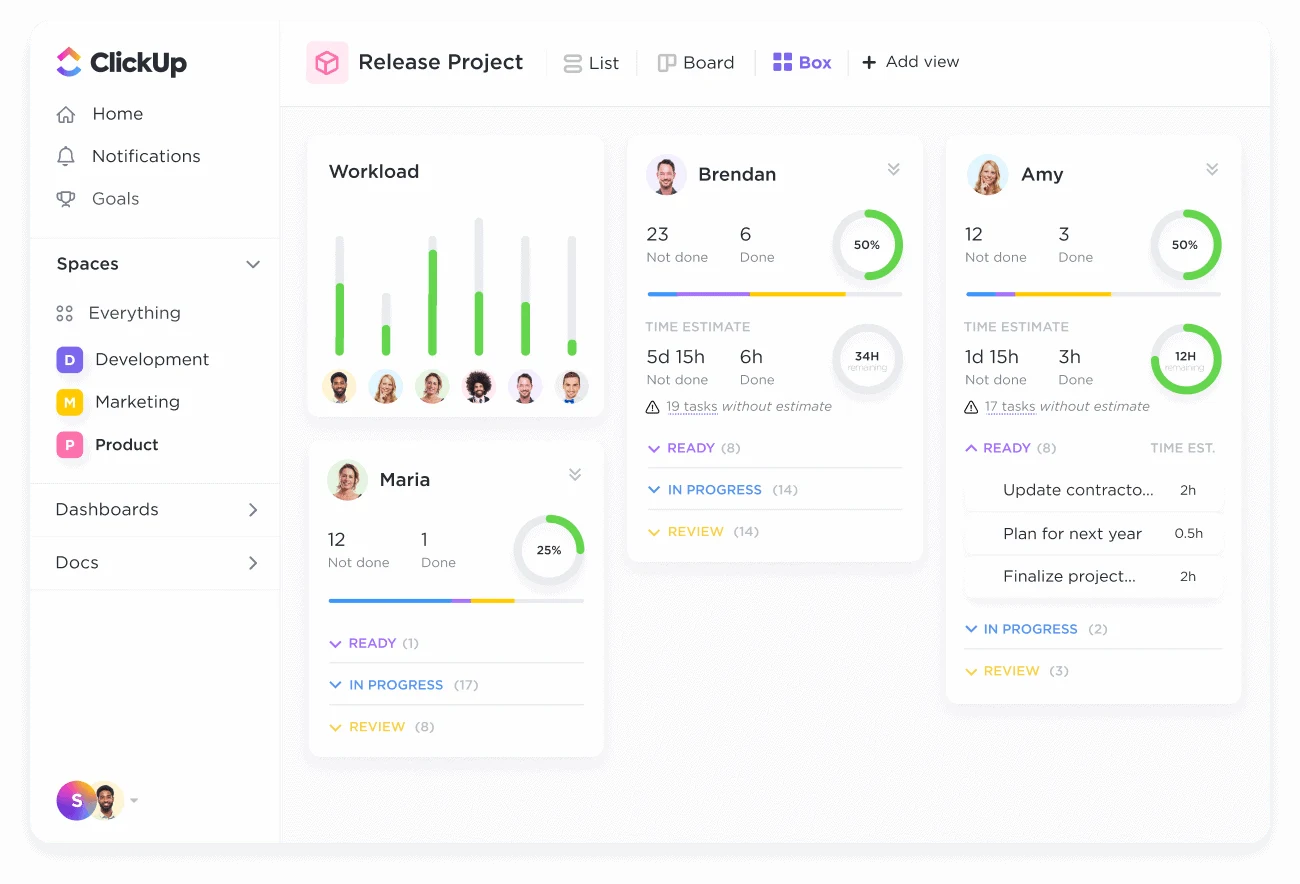
ClickUp is an all-in-one AI-powered productivity tool that integrates tasks, chat, documents, and automation into a single platform. It offers a comprehensive suite of features designed to enhance project management efficiency.
ClickUp is an all-in-one AI-powered productivity tool that integrates tasks, chat, documents, and automation into a single platform. The platform goes beyond a standard AI chatbot by allowing users to ask questions and generate AI-driven reports on projects. The “Ask AI” feature provides insights into task ownership, saved URLs, and status updates, along with tools like Space Summary for report generation, Project Update for tracking changes over time, and features to find duplicate or stalled tasks.
Each session clears upon closing, ensuring fresh conversations but requiring users to save important reports separately. Additionally, ClickUp offers AI-powered knowledge management to help teams access internal information and an AI writing assistant to enhance communication.
Key Features:
- Provides instant, accurate answers based on context from tasks, documents, and people within ClickUp
- Generates AI-crafted progress updates and status reports for tasks and documents
- Assists in drafting, editing, and summarizing content
Conclusion
Effective software development project management ensures timely, budget-friendly, and high-quality delivery. The right methodology boosts productivity, collaboration, and adaptability, enhancing efficiency and stakeholder satisfaction.
Selecting and building project management software that aligns with your business model, needs, and projects can be challenging, given the vast array of tools available on the market. An improper choice can lead to misalignment with business goals, subpar project outcomes, and a lack of real value for stakeholders.
With expertise in customized project management solutions, LARION empowers businesses to stay organized, optimize workflows, and drive success by providing tailored solutions that meet their unique operational requirements.
Ready to discuss your software development project management? Contact LARION today for a free consultation.


